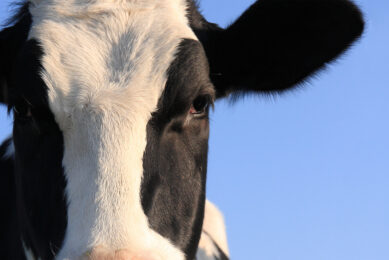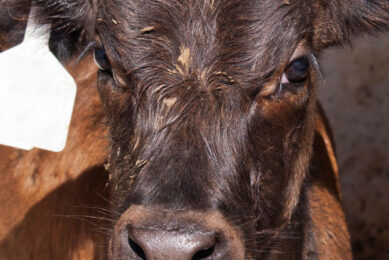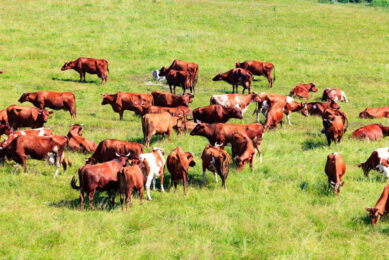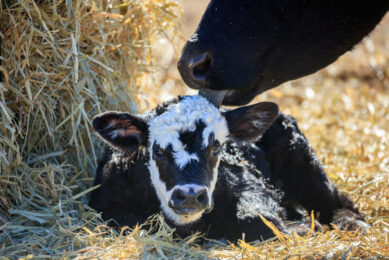Bull fertility: Improving cow conception rate
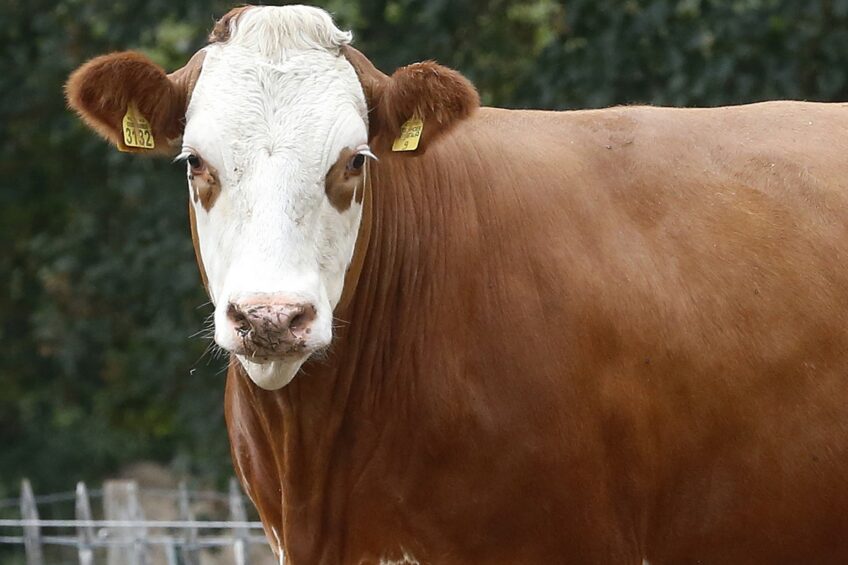
Fertility is an economically significant trait in dairy production systems; however, genetic evaluations for fertility are only calculated for females in the US dairy industry. To improve the overall efficiency of dairy production, it is necessary to identify and eliminate young bulls with sperm abnormalities and unacceptable semen quality. Genetic and genomic evaluations are effective tools available to achieve this goal.
In dairy production systems, a large number of cows are artificially inseminated or serviced by an individual bull; therefore, bulls have a significant impact on the genetic gain of a herd. In addition, improving bull fertility traits increases the conception rate, improves offspring traits and performance, and decreases cost per pregnancy for the producers.
Currently, scrotal circumference is the only male fertility-related phenotype collected and utilised for genetic evaluation. Studies have shown that selection for increased scrotal circumference size decreases the calving interval, improves daughter pregnancy rates, and increases average daily gain. It is therefore necessary to identify additional male fertility traits and to evaluate their relationship with economically relevant traits.
Genetic evaluation of bull fertility
Bull fertility is influenced by genetic factors and can be improved through selection within the context of breeding programmes. Semen production and quality traits are a major determinant of bull fertility and relatively easy to measure. However, various terminologies are used to describe these subjective traits which may result in bias in genetic evaluation. In addition, various factors such as age, nutrition, temperature, semen collector, and collection interval must be considered when evaluating semen production and quality traits. Furthermore, recent technology developments, such as computer assisted semen analysis, provide more objective measures of semen production and quality traits.
Semen production and quality traits
Scrotal circumference
Scrotal circumference has a moderate to high heritability and is often used to predict the number of sperm produced. Scrotal circumference is measured using circular tape around the widest part of the testicles. Studies have shown that bull age has no impact on the heritability estimate of scrotal circumference.
Semen volume
Semen volume is defined as the total amount of the ejaculation expressed in milliliters with moderate heritability.
Concentration
Concentration is a low to moderately heritable trait which is described as the number of spermatozoa in the ejaculation, expressed as millions per milliliter and measured with a colorimeter.
Number of spermatozoa
The number of spermatozoa, a moderately heritable trait, is a function of both concentration and semen volume which is expressed in millions of spermatozoa per ejaculation. The number of spermatozoa is calculated by multiplying concentration and semen volume.
Motility
Motility or progressive motility is the ability of the spermatozoa to move progressively forward which is scored as a percentage of the ejaculation. Motility score or mass activity is a subjective score which depends on the individual standards of the collection protocol.
Percent normal spermatozoa
Percent normal spermatozoa is defined as the percentage of spermatozoa with an acceptable morphology with moderate to high heritability estimates.
Percent abnormalities
Percent abnormalities with low to moderate heritability are described as the spermatozoa in an ejaculation that are aberrant or have undesirable characteristics.
Sire conception rate
The sire conception rate is a selection index providing genetic prediction for dairy bulls. Sire conception rate evaluation includes inbreeding of the bull, inbreeding of the embryo from the mating, age of the bull, artificial insemination center where the bull was collected at, year of collection, and the effect of the bull. It is challenging to determine which bull fertility traits to measure when making selection decisions; studies therefore suggest estimating bull fertility by directly measuring sire conception rate.
Reported genetic correlations provide useful information for indirect selection to improve bull fertility. Semen volume has a positive correlation with the number of spermatozoa, but a negative correlation with percent normal spermatozoa and progressive motility. Semen concentration has a positive correlation with motility, and the number of spermatozoa, but a negative correlation with percent abnormalities. Positive correlations indicate that selection for one trait could benefit another.
Genomic evaluation
Genomic prediction is used to evaluate bull fertility using the information on the bull’s entire genome. The purpose of genome-wide association studies is to identify genomic regions and individual variants associated with complex traits and then to incorporate this information in genomic prediction of bull fertility. Genomic studies have identified several single nucleotide polymorphisms within or near genes associated with male fertility traits. For example, genes NYD-SP5 and PIAS1 found on chromosome 1, gene TMEM119 found on chromosome 17 and gene PIWIL3 are associated with spermatozoa development.
Gene COX7A2L on chromosome 11 and gene SLC25A31 are involved in mediating energy generation and consumption in the distal flagellum which impacts spermatozoa motility. In addition, gene CDH18 is responsible for mediating cell-to-cell adhesion and spermatozoa motility. Gene KCNU1 found on chromosome 27 is responsible for maintaining normal sperm morphology and motility.
On the other hand, gene ZMYND10, exclusively expressed in the testis, impacts cilia integrity, and is associated with sperm dysmotility, and thus infertility. Furthermore, gene DNAH3 causes abnormalities in the sperm flagella and negatively impacts sperm motility. Gene PKDREJ encodes a sperm surface receptor which mediates interaction between sperm and egg, and genes STX2 and FER1L5 control membrane fusion involved in spermatogenesis.
Conclusion
Genetic and genomic evaluation of bull fertility provides a predictive power to dairy producers to improve conception rate, reproductive efficiency, and profitability. Bull fertility is evaluated in the laboratory using semen production and quality traits such as scrotal circumference, semen volume, concentration, number of spermatozoa, motility, percent normal spermatozoa, percent abnormalities, and sire conception rate.
In addition, genome-wide association studies have identified genomic regions and individual variants associated with complex traits to predict bull fertility. Although beyond standard genetic and genomic prediction, there is a need to better understand the underlying biology of male fertility. Further research is therefore needed to focus on dairy cow fertility trait phenotypes.
Join 13,000+ subscribers
Subscribe to our newsletter to stay updated about all the need-to-know content in the dairy sector, two times a week.



